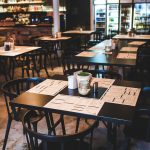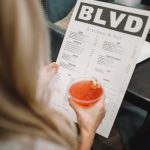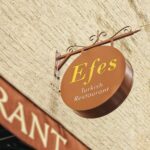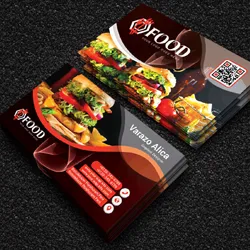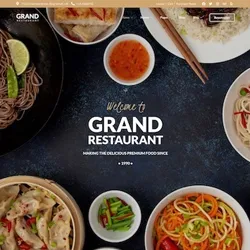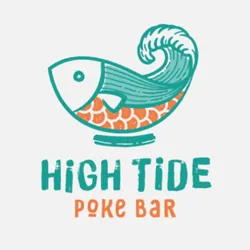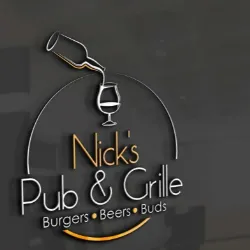Menu engineering is a way of evaluating a menu’s pricing by using food costs and sales data. It involves categorizing the items on the menu based on sales volume and profitability. To engineer a menu properly, you need a firm grasp of the price of each item on the menu, the cost per serving, and its contribution margin.
With that information, a restauranteur categorizes menu items by the most profitable and those that do not pull their weight. The latter items need to be adjusted or removed. Menu engineering is a set of exercises that assures every drink and dish on a menu is popular, profitable, or both.
How to Engineer and Maximize Menu Profits

The amount of time needed to engineer a menu depends on its size. There are five broad steps to take. They are
- Choosing a time period
- Costing the menu
- Categorizing items based on popularity and profit
- Redesigning the menu
- Measuring the new menu’s impact
Choosing a Time Period

It makes sense for restaurants that change the menu based on seasonal produce to choose when new seasonal menu items are crafted. Restaurants that adjust the menu less frequently do not have to revisit the menu as often.
It would be a mistake never to revisit the menu. The cost of food grows, and menu prices must reflect that. If food prices increase and the menu prices stay the same, gross profit margins shrink, and owners make less money.
Costing the Menu

Some metrics measure item profitability. They are contribution margin and food cost percentage. The information should be available in a restaurant’s Point of Sale system. If it is not, there are formulas for calculating them manually.
Calculating Food Costs Per Serving

Hamburgers are food served at many restaurants and bars. If five pounds of ground beef costs $20, and a single burger is made of eight ounces of meat, the cost of the meat per serving is $2.00. Figure the cost of each ingredient, such as
| Ingredient | Cost |
| Eight oz of ground beef | $2.00 |
| Bun | $0.20 |
| One T sauce | $0.10 |
| Cheese slice | $0.50 |
| Slice of tomato | $0.25 |
The value of all the ingredients needed to make one serving is $3.05.
Calculating the Contribution Margin

The contribution margin is the profit of an individual menu item, found by subtracting the cost from the sales price. If the menu price is $9.50, the contribution margin is $6.45.
$9.50 – $3.05 = $6.45
Determining Popularity of an Item

Most POS systems generate reports that show how much of a menu item is sold over a length of time. Lightspeed is a system that generates reports on the cost, revenue, profit, and number of sales for all products on the menu. Besides analyzing the data, meet with bartenders and servers to find out what dishes sell the most often. These people are on the front line. They talk with customers and can offer valuable insight.
Categorizing Items Based on Popularity and Profit

When you know how much of every item sold over a particular length of time and its contribution margin, they can be categorized based on profitability in a menu matrix. Menu items fall into four menu engineering categories – puzzles, duds, stars, and plow horses. When the menu matrix is complete, it clearly shows the menu items responsible for profits and those that are not and need to be reworked or removed from the menu.
Puzzles: Low Popularity, High Profitability

Puzzle items are not a popular choice but are profitable. Try to pinpoint the reason they do not sell well. It may be the place on the menu or the description. Decide if you should promote the dishes on social media. Ask yourself if the price is too high. All the above impact an item’s popularity. Experiment with some marketing strategies and measure the change in sales results.
Duds: Low Popularity, Low Profitability

Duds are items that are not popular and are expensive to make. They take up valuable menu space and distract guests from puzzles and stars. There are several options for duds. They can be removed from the menu, de-emphasized, or rework the ingredients or price based on customer feedback. If a dud is reworked and continues to have low sales and contribution margin, remove it from the menu.
Stars: High Popularity, High Profitability

Stars are the most profitable, popular items on the menu. Do not rework them. Promoted them using every marketing strategy you have. Make sure the menu design draws attention to them. It is likely to increase sales and maximize profits.
Plow Horses: High Popularity. Low Profitability

Plow horses are expensive, popular items. The goal for items in this category is making them more profitable by pairing them with high-profit sides and cocktails, reworking the ingredients, lowering food costs, or raising the menu price. Pay attention to the portion size. If customers rarely eat all the servings, serve a slightly smaller portion. It reduces food costs and wastes in the process.
Redesigning the Menu

Use the menu matrix to decide which items to include in a new menu layout and design. Gather feedback and qualitative data from customers and servers to use besides the quantitive data. Ask servers which items sell the most, are hard to sell, and get negative guest feedback.
Send a Typeform survey to members of a loyalty program or other customers. Ask what they like about the restaurant and want could be improved. Which items are the least appreciated and favorite dishes? Are they pleased with the number of options?
Choosing the Perfect Menu

All menu configurations do not have the same value. The effectiveness of menu engineering efforts depends on how many panels a menu has. Menus with one panel allow customers to make decisions fast. They do not order as much—lower profits per customer result.
The best menu configuration is the two-panel menu. It evokes a complete dining experience feeling and is easy to read. A three-panel menu may be required if space is needed for a lot of items. It is not as easy to read as a two-panel menu. The more panels a menu has, the less influence and control you have regarding decisions made by customers.
Write Awe-Inspiring Descriptions

A study published by The Association of Consumer Research found menu items sell 27 percent better with a well-written description. Instead of listing ingredients, an excellent menu uses descriptive adjectives without being long-winded. Mentioning where ingredients come from, texture, freshness, and how they are prepared are all beautiful ways to write poignant descriptions – remember to keep them short.
Emphasize Puzzles and Stars

Place graphic elements like a splash of color, photo, icon, or outline next to items you want to promote. The visual element draws the eyes of customers like a magnet. Their attention focuses on items you want them to order.
Do not overdo the graphics. Highlighted items will not stand out if there are too many. They get lost among the graphics and defeat the purpose. One graphic element per page can increase the sale of the item up to 30 percent. The more visual cues added, the lower the impact is. With the use of eye magnets meant to draw attention to puzzles and stars, less is more.
Consider Patterns of Eye Movement

People focus on certain menu areas depending on the number of panels. The items you want to draw customers’ attention to on a one-panel menu should be placed at the top of the page. For two-panel menus, feature them on the top of the right panel. The top of the third panel is the location for three-panel menus. If there are more panels, feature items at the top of each page.
The Burden of Choices

When customers have too many choices from which to choose, they have a more difficult time deciding what they want. They are more apt to be unhappy with the choice they made. It is possible to prevent fear of missing out.
If the menu is extensive and includes breakfast, lunch, and dinner, split them into separate menus and swap them as one service ends, and another begins. Consider refining the menu. Cost every item and remove any duds.
Train the Staff

There is a behind-the-scenes strategy for crafting a menu. Teach the staff which items to push. They help guide customers toward profitable dishes.
Measuring the New Menu’s Impact

After a month or so, examine the menu redesign sales data to determine if the tweaks had a financial impact. Did you sell more star and puzzles items? Was there an increase in profits over previous months? Were food costs lower? Based on what you find, continue tweaking the old, testing new dishes, and rethinking the layout. Track your results to determine what worked and what did not.
Menu Psychology

A thoughtfully designed menu is the most valuable marketing piece for a restaurant. Menu psychology and menu engineering tactics push high-profit margin items while creating a fulfilling, relaxing customer experience.
Menu engineers and psychologists have identified strategies that encourage customers to select high-profit items and spend more money. The techniques include emphasizing dishes and muting costs. Valuable engineering tips include
- Guiding customer attention to high-profit items
- Including a decoy menu item that seems overly expensive
- Bracketing
- Using the nesting method to write pricing information
- Selecting descriptive language
Guiding Attention to High-Profit Items

Surround items with white space, or include a shaded or colored box, graphics, or photos. Place items you want to promote in the top left corner, top right corner, and menu center. Highlight only a dish or two per section.
Psychologists call the three areas ‘The Golden Triangle.’ It refers to where the eyes tend to move when reading a menu. Place the most profitable at the top and one at the bottom of a list. People notice and order the first two and last items on a list more often than other items.
Including a Decoy Item that Seems Overly Expensive

Place high-profit margin items near the decoy. They might have a reasonable price. When compared to the decoy, they appear even more attractive. You can also put the decoy near pricey, high-profit items to make them seem more reasonable compared to the decoy.
Bracketing

The method includes two portion options for a dish that does not include the exact size. The larger portion has a steeper price, while the smaller one seems cheaper. Even though the customer does not know precisely how much ‘smaller,’ they seem to feel it is the best value price because it costs less. The smaller portion is what you hope the customer orders. This tactic makes the item more attractive because guests feel they chose the dish with good value.
Using the Nesting Method to Write Pricing Information

Discreetly list the price after the description using the same size font. Customers’ eyes glide over the price instead of focusing on it. Avoid these tactics.
- Ending prices with .99
- Dollar signs
- Price trails
- Price columns
Using .99 sounds cheap and unsatisfying to customers. Dollar signs remind customers they are spending money. Eliminating the dollar sign softens the price. Dotted lines that connect items to the cost are price trails. They take the focus to the price instead of the description. Placing prices in a column next to the items causes guests to compare prices and order based on the lowest price.
Selecting Descriptive Language

Many guests make their decision based on the description. Descriptive labels lead them to feel more satisfied with a meal. Appetizing descriptions can offset high prices.
Psychology Menu Tips

Guests typically scan a menu for about 109 seconds. That is a small amount of time for setting the menu’s tone for both optimal profit and customer satisfaction. Here are tips to ease the customers’ experience that are based on menu design psychology research.
- Use colors that capture attention and trigger appetite.
- Make the menu scannable.
- Limit choices.
- Humanize dishes or invoke nostalgia.
- Have a separate dessert menu.
- Use few or no photos,
- Choose a menu that is reasonable in size.
Orange, yellow, and red are bright colors that capture attention and trigger appetite. You can use them to attract attention to specific menu areas and create a layout hierarchy. Match color schemes to the restaurant’s theme. It reinforces associations. Light blue highlights a seafood restaurant’s ocean-caught fish. Tan and green are suitable for farm-to-table restaurants.
Choose an easy-to-read size and font and avoid crowded layouts. Have visible dish titles and clear section headings. Even menus with more than a page or two need fewer choices in each category. Guests feel at ease when selecting from the menu. The more options from which to choose, the more anxious customers feel. Psychologists suggest limiting options to seven items per category.
Humanized dishes are attractive to customers because they are ordering something special that induces feelings of closeness, comfort, or happy childhood memories. Examples include ‘Campfire Hot Chocolate’ and ‘Granny’s Chocolate Chips Cookies.’ Refer to the restaurant owner or chef with items, such as ‘Charlie’s Charbroiled Steak.’
When customers see eye-catching desserts, they are more apt to pass on appetizers. Surprise guests with the dessert menu after dinner. It increases the likelihood of customers ordering both appetizers and desserts.
High-end restaurants do not use many photos. They are associated with cheaper, low-end venues. One image per page may increase sales by as much as 30 percent, especially at affordable, casual restaurants. Facebook and Instagram are excellent places for using photos.
A physically oversized menu is uncomfortable for customers to handle. It should be easily maneuvered and easy to place on tables. Using menu engineering tactics can significantly improve the profits of a restaurant. The psychology techniques improve the guest experience.
The Potential Impact of Menu Engineering

Menu engineering studies the popularity and profitability of menu items and how they influence the placement of items on a menu. The aim is simple – increase profitability per customer. The concept is rooted in work performed by the Boston Consulting Group in 1970.
It is meant to help businesses segment products through analysis and decision-making. Michigan State University’s Professor Donald Smith brought the idea to the restaurant industry around 1980. Menu engineering is used most often for traditional paper menus.
The concepts apply to items written on a menu board, a special written on a table tent, drink menus, and online menus. They help increase profits for those who sell items of varying levels of popularity and profitability.
The initial well-executed engineering takes approximately a week to complete and can increase profits by ten to 15 percent regularly. The impact does not stop there. Asking a professional to squeeze more profit from the menu annually can increase profit by another ten percent.
Success does not depend on the size or type of establishment. Determining factors are the owner’s or manager’s knowledge of a menu and willingness to take the time and put in the effort to understand the process and make changes. Sixty out of 100 restaurants do not perform menu engineering. Of the 40 percent that does, only about ten percent do an excellent job. They leave a lot of profit on the table.

